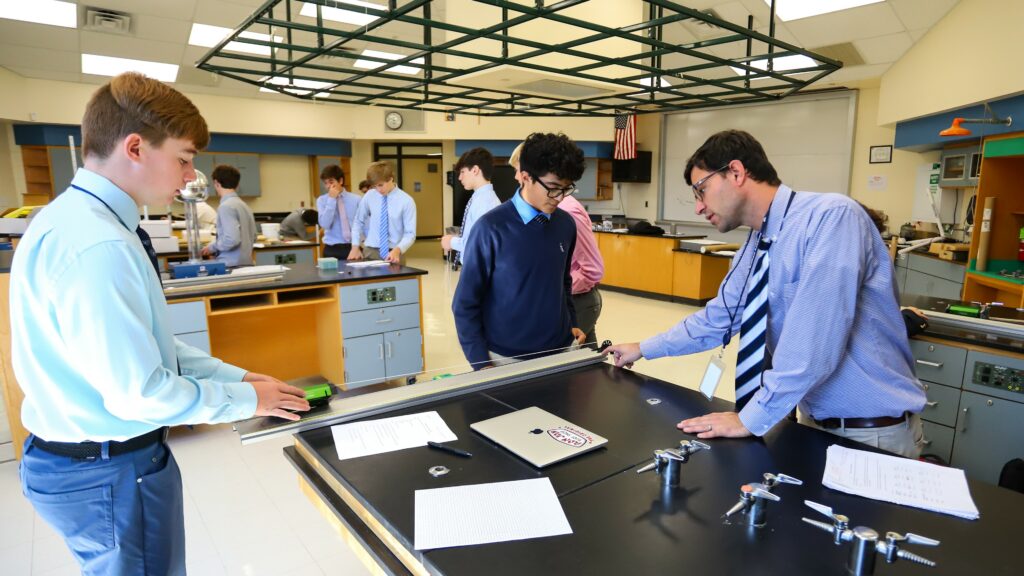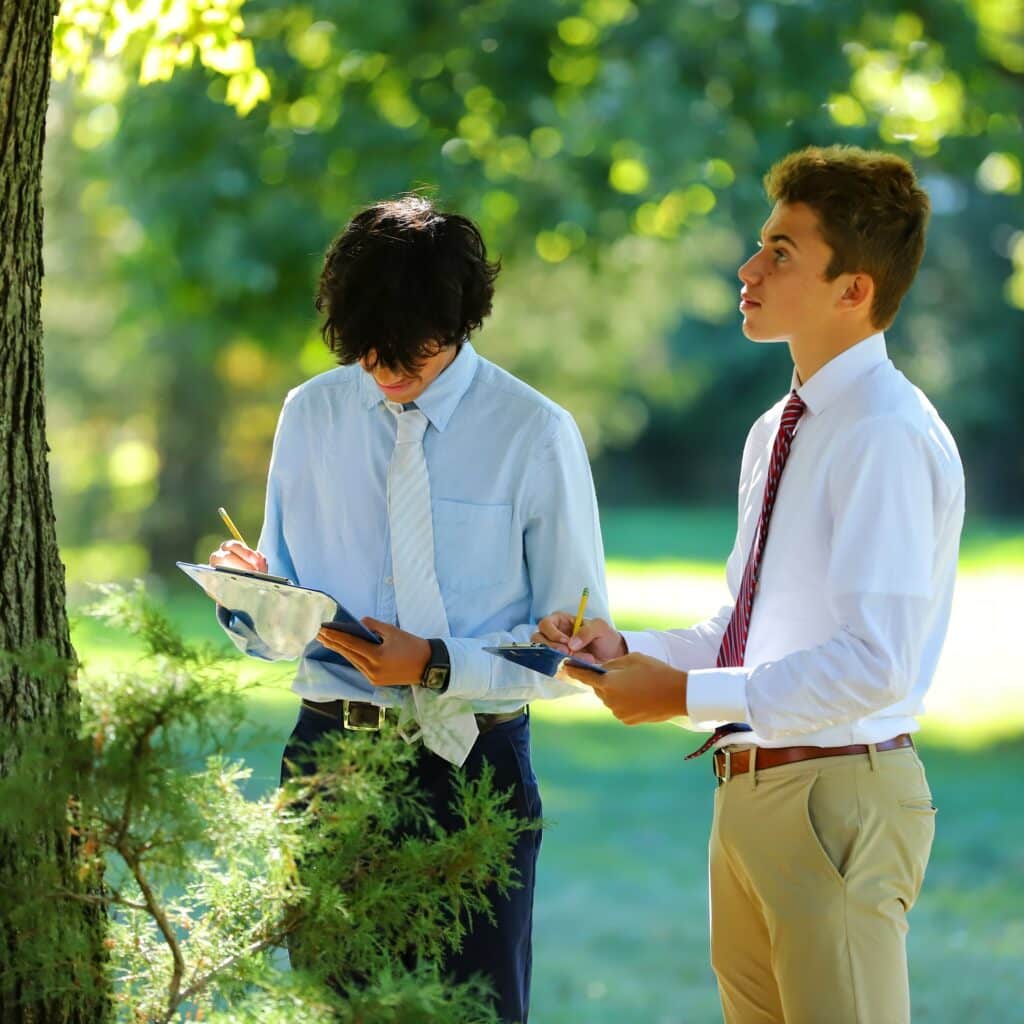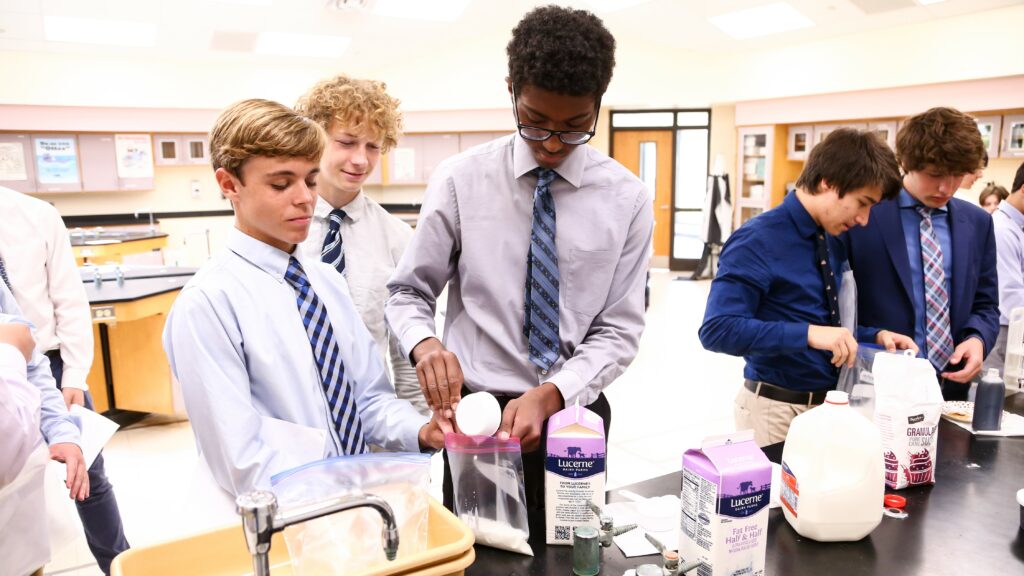Science at CBA: Real World Examples, Modern Labs, Engaging Content
October 4, 2022

On any given day, one could find a variety of activity in the science lab wing of the Academy.
A biology class observing micro-environments in nature outside the lab. A chemistry class calculating the pressure involved in making popcorn. A physics class designing and printing a 3D boat to measure how much weight it could hold.
With the guidance of talented, dedicated teachers, the collection of sciences at CBA help students observe the world around them and think critically to solve problems both in and out of the classroom.
“As a college prep school, we believe that all students need a basic understanding of biology, chemistry and physics,” said Marcos Orozco ’01, science department chair. “While that is the focus of the material covered in a student’s career, the goals of these classes are much broader. Science at CBA teaches modern scientific thought, while also teaching the young men how to be both better students and better people.”
All students are required to take biology, chemistry and physics in that order during their first three years at CBA. Each discipline of science has Advanced Placement, honors and standard levels of study.
Freshmen start with biology because the faculty believes it sets each student up for future success in science.
“Biology provides students with an evidence-based background to make informed decisions in their future,” said Tom Mulligan ’83, who teaches biology. “Whether it be related to human health, the environment, or genetics, the study of biology provides information for students to make informed decisions about the living world they will contribute to.”
The biology lab is a dynamic space for freshmen at the Academy. They look forward to the lab setting where organisms and themes are taught through a hands-on, collaborative approach, including dissections, microscope work, and field observations.
“The biology lab is where the information learned in class truly comes to life,” Mulligan said.
Chemistry gives sophomores a new challenge during their second year of the science curriculum. Students pivot to working more analytically, while also using the observatory skills that they learned in biology class.
“Chemistry is offered sophomore year to build upon the concepts learned in biology,” said chemistry teacher Carol Dobrowolski. “Biology focuses on the understanding of living things where chemistry challenges students to take a closer look at the materials that make them up as well as the materials that are a part of their world. We focus on the building blocks of life and how understanding their structure helps us to understand how they behave.”

The chemistry lab is a setting that harps on students’ ability to think critically and propels them to become more comfortable in a laboratory setting. Skills such as measurements, real world applications, and analytic comparisons are enhanced during sophomore year.
Some of the most entertaining lab assignments happen during sophomore chemistry as well. Students work on separating mixtures, observing chemical reactions, and even making ice cream.
Dobrowolski and her fellow chemistry teachers are focused on changing common perceptions about chemistry with their students.
“I truly believe that people do not realize that the concepts you learn in chemistry have real world applications,” she said. “It is rewarding when students are able to understand a concept and then apply it to their lives. Sharing this knowledge with my students keeps me motivated and excited to teach chemistry.”
During junior year, CBA students transition to physics, where critical thinking and logic are taken to the next level at an important time in a student’s high school career.
“I love teaching physics to help students explore the world around them,” said Therese Heidelberger, who teaches AP and honors physics as well as engineering. “Juniors are learning to drive, so we spend time calculating braking distances, reaction time, and the effect of glancing at a phone for even a second or two.”
While students take robust science, mathematics and computer science courses at CBA, it is during physics class when the three disciplines come together. Physics courses have students analyzing graphs, while understanding how Arduinos, DC circuits, and electricity are connected.
Of course, the physics lab is a spot for a few of the coolest assignments in a CBA academic career.
“One of the favorite physics labs is a cannon lab,” Heidelberger said. “Students are given a projection angle to set the cannon, and after calculating where to place a cup, the students fire, hoping the ball will land in the cup and they will receive a perfect lab grade.”
While the requirements end after junior physics class, science does not stop for most Academy men in their senior year. During a student’s final two semesters, seniors can enroll in a variety of courses that provide a new challenge. Options include anatomy & physiology with lab, marine biology with lab, exercise physiology, and environmental science.
“Seniors of all academic levels have the opportunity to take courses in a huge array of fields in both the life and physical sciences,” Orozco said. “Although there are similarities across fields, the diversity of scientific study should be shared, explored and cultivated. The teachers believe that they can share their love of science and deepen student interest through the robust elective program.”
With an intriguing offering of science electives, it is no surprise that nearly 75 percent of seniors over the past four years have taken a science course.
Undoubtedly, it is the collection of science teachers that makes this department come alive for its students throughout their four years.
“Science is our passion, our mindset and our way of life,” Orozco said about his colleagues. “I am constantly amazed by the effort of the department to keep lessons fresh, engaging and topical. While the concepts and the purpose of our classes stay the same, the approach and examples we talk about are ever changing and it makes our classes as dynamic as the subject we teach.”

